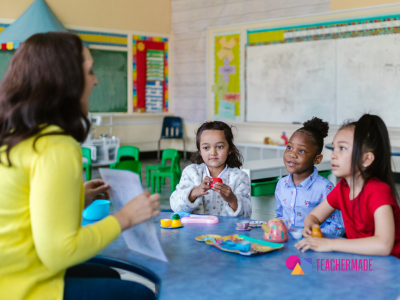Multimodal learning refers to the process of integrating information from multiple sources or sensory channels, such as text, images, audio, video, and gestures, to enhance learning and understanding. It recognizes that different modalities provide unique and complementary information, and leveraging these multiple sources can lead to more comprehensive and effective learning experiences.
In traditional learning scenarios, teachers present information through a single modality, such as text-based materials or lectures. However, multimodal learning takes advantage of the capabilities of various modalities to provide a richer and more engaging learning environment. For example, incorporating images, videos, or interactive simulations alongside textual content can help illustrate complex concepts, provide visual cues, and increase learner engagement.

The VARK framework is a model that categorizes different learning based on four main modalities:
The acronym VARK stands for these four modalities. Neil Fleming developed the VARK model in the late 1980s, and has been widely used in education to understand and accommodate different learning preferences.
You can take a quick quiz to determine the best learning modality for your learning style here.
It’s important to note that while individuals may have a dominant learning style within the VARK framework, many also exhibit a combination of learning styles. The VARK model suggests that by recognizing and catering to different learning preferences, educators can enhance the learning experience for diverse students.
Multimodal instruction can take on different forms in the classroom. TeacherMade makes it easy to create multimodal classroom activities:
Technology is one of the easiest ways to infuse multimodal instruction into your everyday classroom. You can create online presentations, formative assessments, and activities with every modality.
You can incorporate pictures, videos, and sounds into your online slideshows and assignments. Media helps to illustrate concepts differently to drive a new concept home.
Don’t let multimodal instruction stop when you finish your lesson. Incorporate all four modalities on assignments, practice, and assessment. With TeacherMade, you can include multimedia and over 20 different question types.
Give your students feedback each step of the way. In a multimodal classroom, students receive instruction in new ways. In some cases, their learning will take off, but in others, you may find learning harder. Feedback keeps the dialogue open for you and your students so you can take academic risks and incorporate multimodal instruction into your everyday learning.
Multimodal learning does not mean using every form of multimedia you can find. This can overwhelm students and distract them from the overall lesson. Be strategic about what materials you include to keep your lessons and assignment focused.
Blended learning allows you to teach traditionally while incorporating technology and multimedia into your everyday classroom.
TeacherMade makes it easy to incorporate multimodal learning into your classroom. With TeacherMade, you can:
Try TeacherMade today to transform your classroom with multimodal instruction.